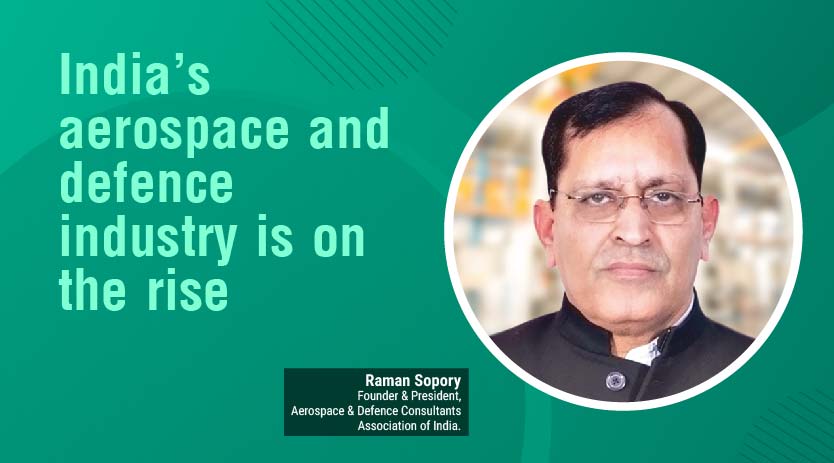Government has put a great focus on MSME revival as well as nurturing them over the next 5 years
March 1, 2022 7:15 pm
Digitisation on the governance front will also help MSMEs receive payments and funding with much more ease than before.
The Government has been doing wonderful work in relation to assisting Manufacturing growth, and particularly to MSMEs, who are the backbone of this manufacturing ecosystem. In an interaction with OEM Update Vineet Seth, Managing Director – South Asia & Middle East, Mastercam APAC remarked, I had expressed my views before the Budget came out this year, and one of the top suggestions I had was to improve the credit facility available to the MSMEs. I’m very glad that the Government has put a great focus on MSME revival as well as nurturing them over the next 5 years. The credit guarantee trust announced in this budget is likely to help many deserving MSMEs to grow further.
Budget impact on machine tool segment technologies
The machine tool segment stands to benefit much from the current union budget. Just the increase in capital expenditure for FY 22-23 should create sufficient demand to regain any lost momentum. Nearly 35 percent YoY increase is significant in the sense that it will drive manufacturing across many segments, with the automotive segment seemingly being the one that gets to access a bigger chunk. In addition to the above, the benefits towards MSMEs will also increase demand for Machine tools in the short to medium term, thereby resulting in a fantastic combination of domestic demand being met by domestic supply situation, magnified by initiatives such as PLI, and the extension of ECIGS scheme for another year.
Financial incentives offered in budget to help boost businesses
The initiative of rating MSMEs will also be undertaken in the coming years and this should allow timely help to the MSMEs without delays and extensive paperwork. Digitisation on the governance front will also help MSMEs receive payments and funding with much more ease than before. The announcement of 6000 crores for the above initiatives goes to show that the Government is focusing on the need of the hour and beyond, with the goal of helping MSMEs succeed.
Provisions in budget to propel local manufacturing of parts and components
While I don’t remember specific references made in the budget to components, overall the budget is very conducive for domestic manufacturing. Obviously, this means that MSMEs being a substantial part of our manufacturing ecosystem, parts and components manufacturing will grow significantly. The increased capital expenditure will also play a major part in creating elastic demand in the market, alongside balancing the pent up demand in the market. Announcements of various skill development initiatives are also positive indicators of “best practices” being put in place to fill in the skill gap, as also enable manpower availability to catch up with the manufacturing growth which is more likely to shoot up rapidly in the short to medium term.
Future role for CAD and CAM for machine tools market growth
CAD and CAM are the basic requirements for any manufacturing these days. Nearly all CNC machines being put in across all domains need data in either 2D or 3D form to enable manufacturing. While growth is imminent, the enablement is what impresses me the most. Just about 20 years back, it was a challenge investing in sophisticated CNC machinery and CAD/CAM systems – which gave roughly about 10-20 percent productivity in comparison with modern CNC systems. The CAD/CAM/CNC market is innovating at a rapid rate and therefore, implementation of these modern systems in an age, where the nation is focusing on increasing manufacturing contribution to the GDP in double digits, will add more growth to the complete ecosystem, including the derivative of all the above – consumer experience.
Additive manufacturing is rising segment
I have always maintained that 3D printing manufacturing is here to stay for a long time and that Additive manufacturing is a great process for certain niche applications. The shift from 2D started a long time back and the journey so far has been very interesting, for the fact that industry at large still is hooked to 2D drawings. Product Manufacturing Information or PMI as it is called, needs to be communicated to the shop floor, in a scientific and technical way to be manufactured and measured accurately. Currently, numerous sets of 2D drawings, at various stages in a life cycle of the part, do this job. Industry standard STEP 242 is expected to reduce this 2D drawing burden to a great extent. While some proprietary formats have always had embedded PMI, they haven’t somehow been able to make the whole paperless manufacturing thing a success. Next, there is a big hype about 3D Printing and Additive Manufacturing. Like any other manufacturing process, it has its own extents for super successes and for known limitations. A good manufacturing engineer weighs many factors before choosing a specific manufacturing process. While the applications that can be replaced by AM are still up and coming, a Hybrid approach in most cases, is what seems to be the future, unless there is a major disruptive contributor.
Labour and skills shortages to influence business strategy
There will always be a dearth of people with excellent skills. Having said that, skill & labour management is a significant part of any large or small business practice and as such will continue to influence business strategy, delivery and quality components of their businesses
Cookie Consent
We use cookies to personalize your experience. By continuing to visit this website you agree to our Terms & Conditions, Privacy Policy and Cookie Policy.

















 English
English Hindi
Hindi